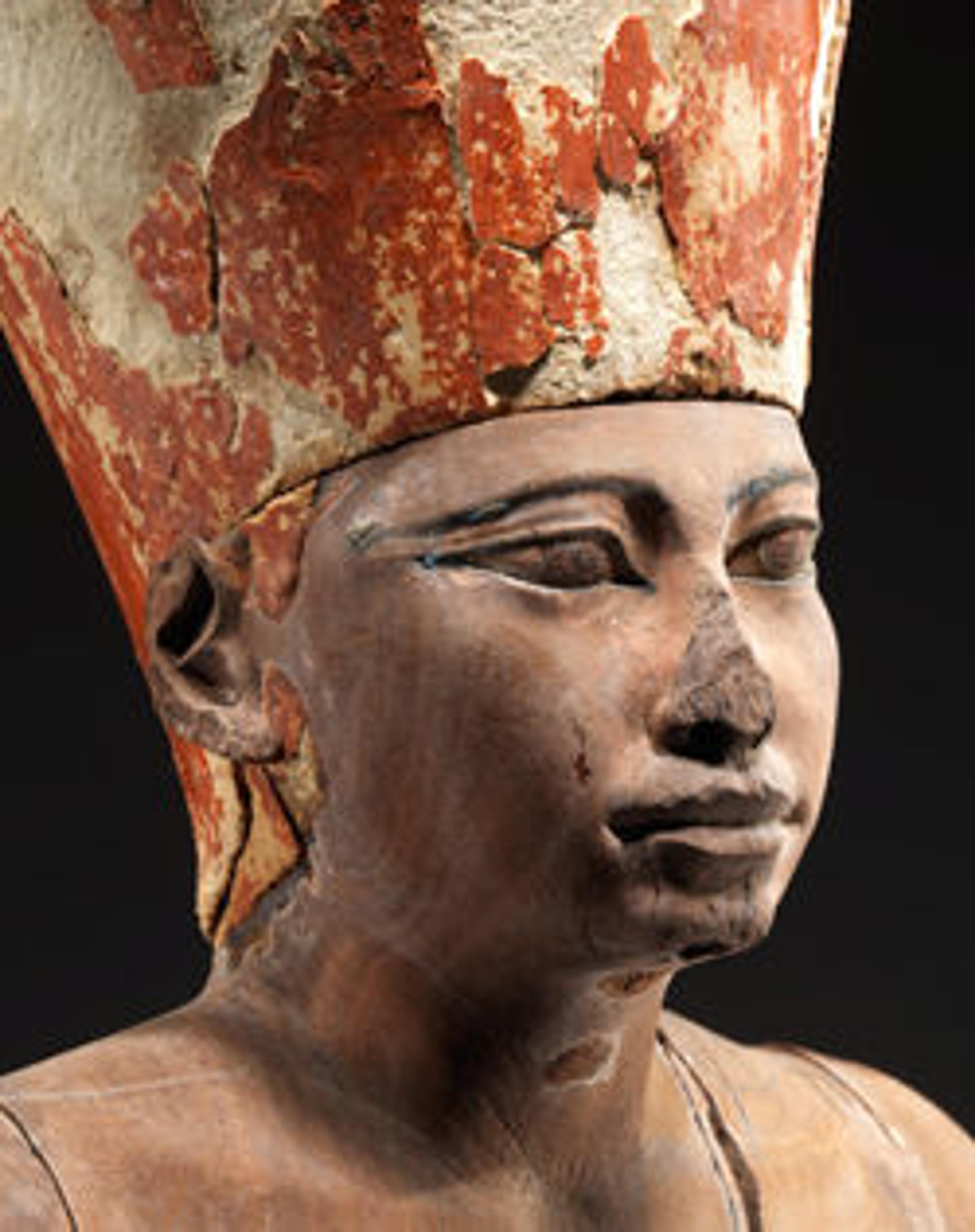Standing Hippopotamus
Among the faience animals found in Middle Kingdom tombs, the best known is undoubtedly the hippopotamus, rendered in a variety of poses that represent this fearsome animal in its natural state, and decorated with images of the plants and animals found in its marshy habitat. This small faience hippopotamus was found in the wrappings of Renisnenb's mummy at the small of the back. Also in the wrappings were a mirror (26.7.1351), a necklace (26.7.1349), and a shen amulet (26.7.1347).
Artwork Details
- Title:Standing Hippopotamus
- Period:Middle Kingdom
- Dynasty:Dynasty 12–13
- Date:ca. 1810–1700 B.C.
- Geography:From Egypt, Upper Egypt, Thebes, Asasif, Birabi, pit tomb CC 25, burial of Reniseneb, back of mummy, Carnarvon/Carter excavations, 1910
- Medium:Faience
- Dimensions:L. 11.7 cm (4 5/8 in.); H. 5.7 (2 1/4 in.); W. 5 cm (1 15/16 in.)
- Credit Line:Purchase, Edward S. Harkness Gift, 1926
- Object Number:26.7.898
- Curatorial Department: Egyptian Art
More Artwork
Research Resources
The Met provides unparalleled resources for research and welcomes an international community of students and scholars. The Met's Open Access API is where creators and researchers can connect to the The Met collection. Open Access data and public domain images are available for unrestricted commercial and noncommercial use without permission or fee.
To request images under copyright and other restrictions, please use this Image Request form.
Feedback
We continue to research and examine historical and cultural context for objects in The Met collection. If you have comments or questions about this object record, please contact us using the form below. The Museum looks forward to receiving your comments.
